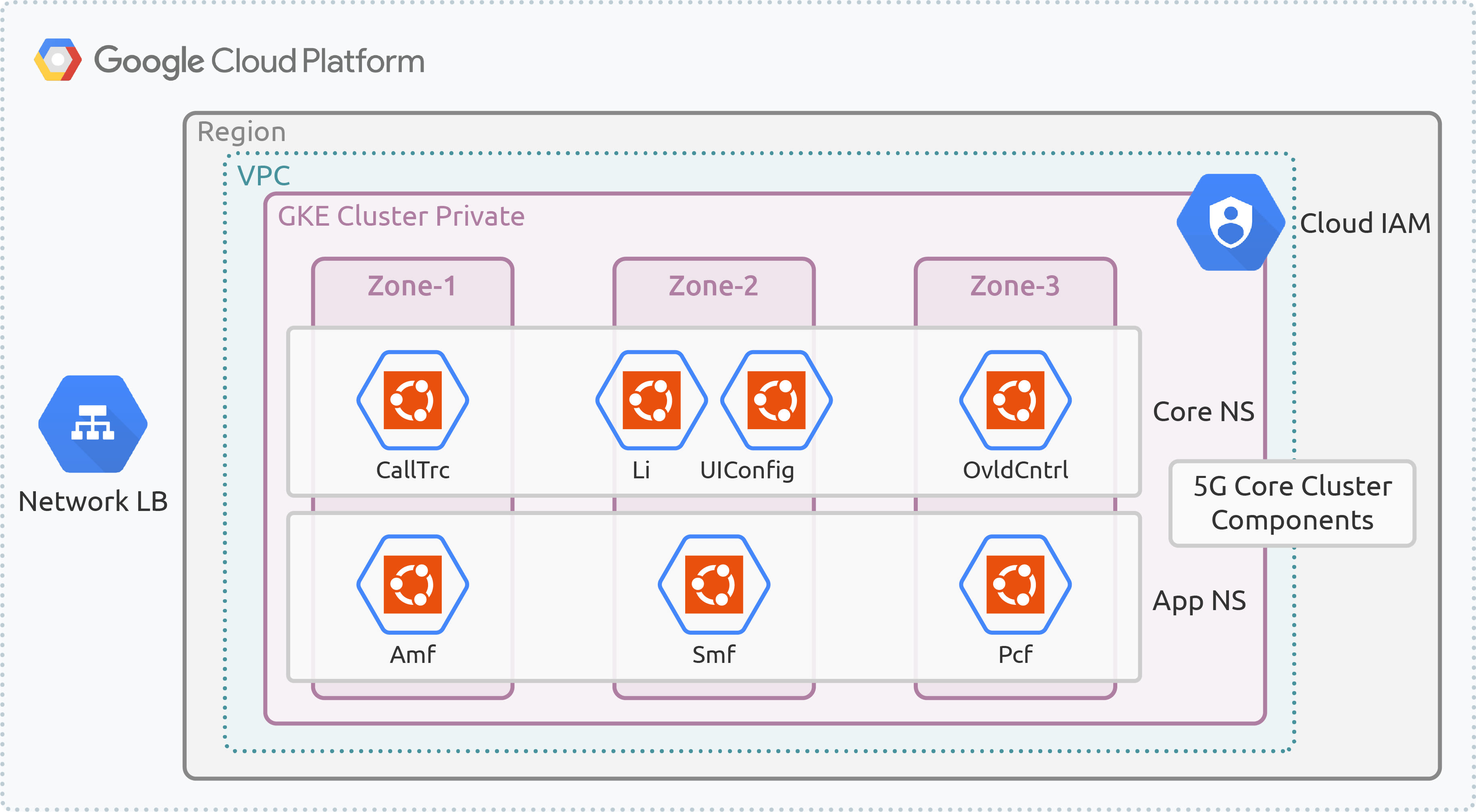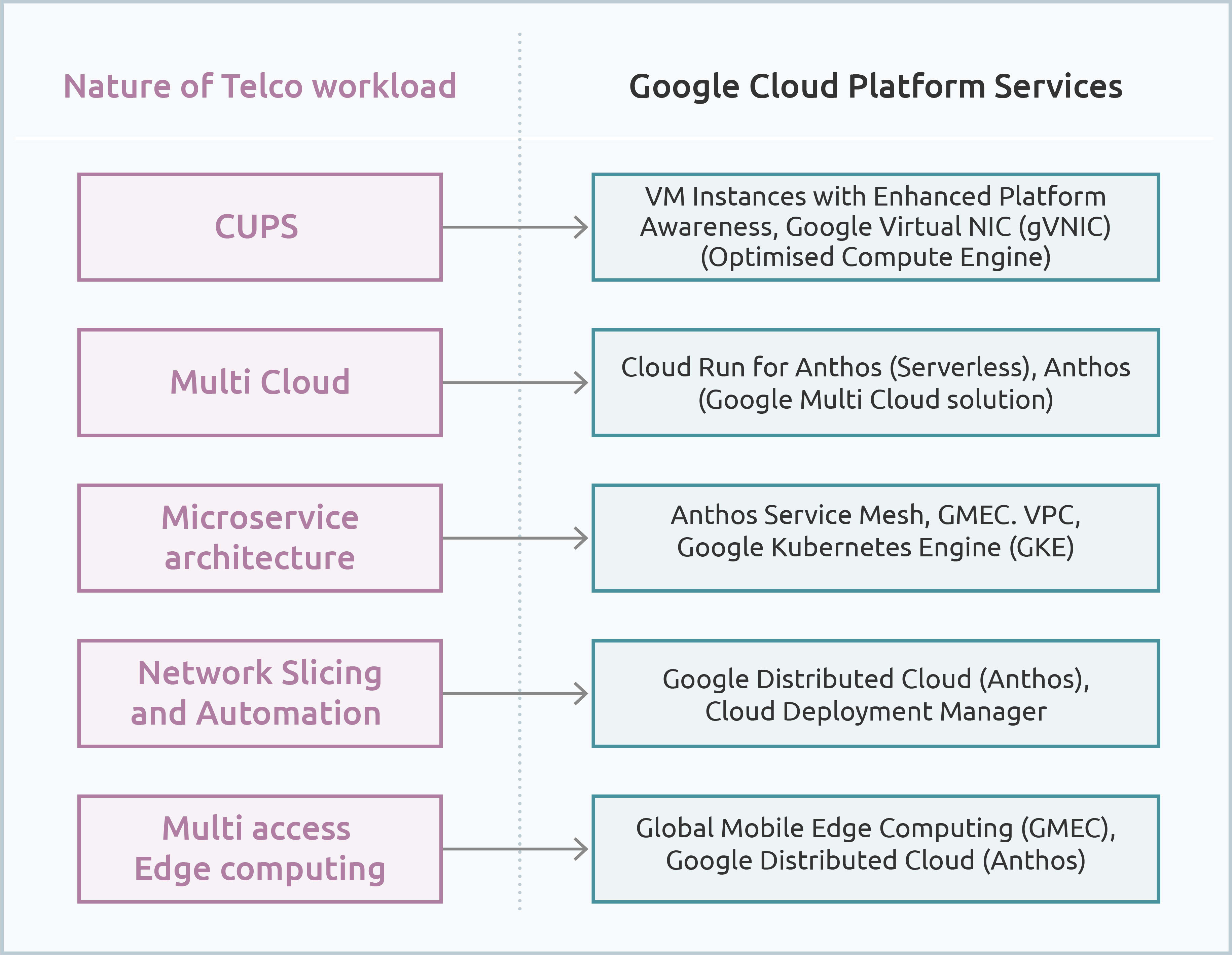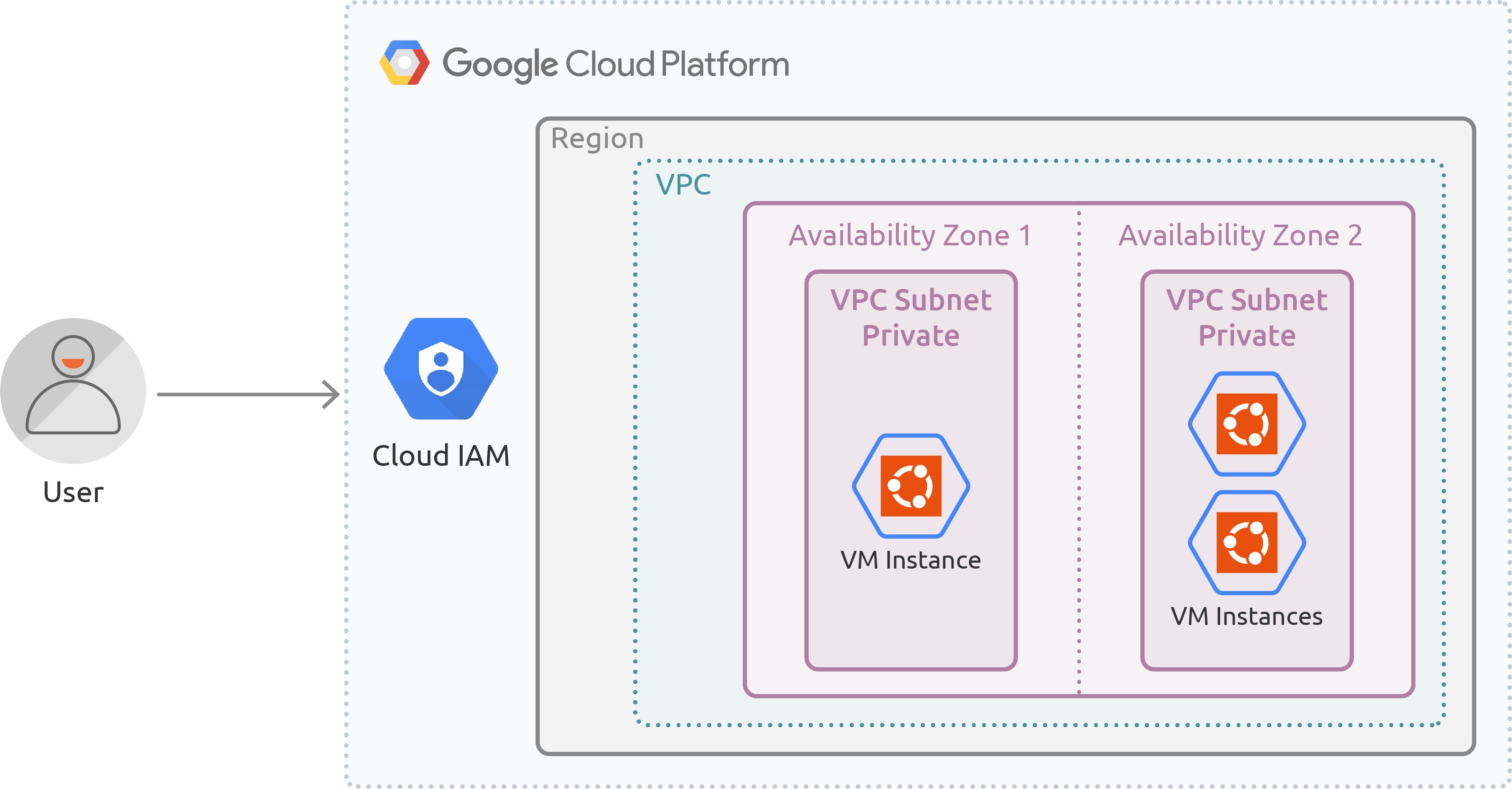Public cloud for telco – Part 2: Google Cloud Platform
Wajeeha Hamid
on 22 September 2022
Tags: Cloud migrations , NFV MANO , Public cloud , Ubuntu on GCP , Ubuntu Pro
This is the second blog in a series focusing on how telecom operators can leverage public clouds to meet their business demands. In a previous blog, we talked about Amazon Web Services (AWS) and how its services made it possible for telcos to shift towards public clouds. In this blog, you’ll get to know about Google Cloud Platform (GCP) and its role in enabling the telecommunications industry to leverage the cloud’s capabilities.
Telcos are evolving each day as per the need of the era, especially with the arrival of 5G. Communication Service Providers (CSPs) rely on traditional network infrastructures and face challenges both in growth and reliability. The question is, how can telcos effectively transform and meet scalability and performance demands?
The answer lies in the adoption of digitisation and cloud-native trends. GCP provides an on-demand platform that can scale as requirements grow. It facilitates high service availability to meet disruptions. It also ensures improved performance with enhanced platform awareness capabilities.
GCP for Telcos
Google Cloud Platform (GCP) is enabling telecom operators and Network Equipment Providers (NEPs) to capitalise 5G and network-centric businesses. Promises of 5G with faster internet speed and lower latencies have increased expectations for users. Therefore, telcos are adopting public clouds to run their applications and services closer to end customers.
In the last few years, GCP has engaged with the telecom industry to help accelerate real time data-driven analytics using Artificial Intelligence (AI) and Machine Learning (ML). GCP also offers a variety of services to telcos with a pay-as-you-go billing model. These services include managed containerised microservices, network load balancing, scalability and fault tolerance across multiple zones and regions. The following services support multi-cloud and edge deployments in particular:
- Google’s Anthos manages containerised workloads. Anthos not only supports multi-cloud deployments but also facilitates the migration of existing workloads to microservices on top of Kubernetes.
- Google also released Global Mobile Edge Cloud (GMEC), a centralised platform to provide 5G solutions. It was built as a joint venture between telecommunication partners to ease 5G adoption, cloud trends and support edge deployments. GMEC delivers more compute power at edge sites to provide reliability for latency-sensitive applications.
Telecommunication companies leveraging GCP’s infrastructure, platform and solutions for their enterprise-grade workloads include Telenor, AT&T and Jio. Figure below represents the microservice reference architecture of 5G components deployed on GCP with ROCKS Ubuntu images.

Telcos can also use GCP’s next-generation platform capabilities in terms of network, storage, and compute.
- Google Virtual Private Cloud (VPC): ensures network connectivity between cloud resources created on top of Compute Engine virtual machine (VM) instances and Google Kubernetes Engine (GKE) clusters. Telcos are utilising this service for secure and reliable communication over private networks between inter and intra tenants, gaining flexibility and scalability. Andromeda is another service which reduces intra-zone network latency between compute VMs by 40%. Telcos can leverage this Software Defined Networking (SDN) stack for latency-sensitive applications.
- Google Compute Engine (CE) : Virtual Machine (VM) Instances have different types including compute optimised, network optimised and memory optimised. The type should be selected based on the nature of the workload. For example, 5G core services like the Access and Mobility Management Function (AMF) and Session Management Function (SMF) can leverage general purpose VM instances as they are not latency or throughput-sensitive. The access network components including radio unit (RU), distributed unit (DU), centralised unit (CU), and the user plane function (UPF) could leverage either compute or network optimised VM instances, as they are latency and throughput sensitive.
- Hybrid Connectivity offers security for hybrid environments. Telcos are using this service to connect to any region around the globe with lower latencies and improved performance. One of the major reasons for its adoption is a guaranteed uptime of 99.99%. It acts like a dedicated interconnect or cloud virtual private network (VPN) ensuring better security for critical workloads and operations.
- Google Virtual NIC (GVNIC) is a specialised interface attached to Compute Engine VM instances as an alternative to VirtIO-based ethernet drivers. Telcos can leverage this interface for higher throughputs and lower latencies.
- Anthos – GKE is a managed platform for application deployments both in VMs and containers. It lets you not only build and manage applications but also ensures operational consistency across them. Telcos are using Anthos for managing GKE clusters across different environments.
- Network Connectivity Centre (NCC) enables enterprise networks that can inter-link between multi-clouds. Telcos could benefit from it to manage and run applications across multiple cloud platforms.
- Cloud Run is a serverless GCP offering that enables telcos to build applications across edge sites. Telcos use Cloud Run for implementing edge logic across different locations in a region.
- Cloud Load Balancing (CLB) manages and distributes the incoming load across multiple instances of an enterprise workload in the same or different availability zones. CLB ensures the security of telco workloads, as they are not directly exposed to the internet. It also enables scalability and security is guaranteed.
The following figure represents GCP services used by telcos for their enterprise-grade workloads.

Running telco workloads on Ubuntu Pro for GCP
Google cloud and Canonical have developed multiple solutions ranging from VMs to K8s clusters and AI. Both companies have jointly created cloud server images for enterprises to accelerate their cloud adoption.
Ubuntu Pro for GCP is a specialised and premium server image developed by Canonical for production workloads. Telcos leverage GCP and Ubuntu Pro altogether with pay-as-you-go billing to minimise their operational expenses. Ubuntu Pro images are optimised for critical telco operations and pricing is proportional to the utilisation of underlying GCP compute resources.
Ubuntu Pro server images are secure, cost-effective and performance optimised. Ubuntu Pro images come with additional security, live patching and compliance to industry standards required for enterprise grade and mission critical workloads. Gojek is one of the leading companies running their workloads on GCP with Ubuntu Pro as underlying Operating System (OS).
Ubuntu Pro images come with added support for enhanced platform awareness (EPA) features including DPDK, SR-IOV, NUMA and HugePages. Canonical also offers base images for containers, which are also compliant with the Open Container Initiative (OCI). Telcos running sensitive workloads on containers leverage GKE and Rocks Ubuntu container images.

Ubuntu Pro is ideal for telcos to run critical workloads on due to its integration with Google Cloud and the following features:
- Reliable Maintenance period – one decade: Canonical provides long-term support (LTS) for ten years to Ubuntu Pro customers, with regular security updates and reliable upgrades.
- Open-source security: security patches for hundreds of applications from the open source community, not limited to Apache Kafka, MongoDB, RabbitMQ, Redis, and NodeJS.
- Multi-version offerings: Canonical offers multiple versions of Ubuntu Pro on GCP including 16.04 LTS, 18.04 LTS and 20.04 LTS.
- Optimised cloud based billing: GCP offers a variety of compute instance types and pricing is purely dependent on the compute resource usage.
- FIPS and CC2 ELA certificates: Ubuntu Pro comes with support for FIPS 140-2 and Common Criteria EAL2-certified components that meet requirements for the Federal Risk and Authorization Management Program (FedRAMP), the Health Insurance Portability and Accountability Act (HIPAA), the International Organisation for Standardisation (ISO), and Payment card industry compliance (PCI).
- Portability: Canonical ensures cloud server images are portable and their mirrors are available to different regions, lowering latency for end customers.
- Live Kernel Patching: GCP live kernel patching is enabled to avoid reboots during routine operations.
- Industry benchmark standards: Optional support for profiles including CIS and DISA STIG to meet industry benchmark standards.
Summing up
The path to digitisation in telecom has always been challenging. But public clouds are providing much-needed flexibility and agility. Telcos need a trusted platform to build on in order to ensure compliance and security as complexity increases.
While GCP takes care of managing the underlying infrastructure, ensuring security and scalability for critical telco workloads as the network grows, Canonical provides secure, compliant and confidential server images to run workloads and an extensive offering to bolster telcos’ security and compliance.
Canonical offers images for both VMs and containerised images, providing flexibility for telcos evaluating environments to run their applications Ubuntu server images have paved an ideal path for the adoption of public clouds.
Looking to increase agility and resilience to focus on your core business? Contact us to learn more about Canonical in telco today.

Looking to run Linux on public clouds?
Did you know Ubuntu is the world’s most popular Linux operating system across public clouds? Canonical publishes official images on Amazon AWS, Microsoft Azure, Google Cloud, IBM Cloud and Oracle Cloud. Learn about the available features and our support commitment
Newsletter signup
Related posts
Canonical to distribute AMD ROCm AI/ML and HPC libraries in Ubuntu
Canonical is pleased to announce an expanded collaboration with AMD to package and maintain AMD ROCm™ software directly in Ubuntu. AMD ROCm is an open...
Canonical announces Ubuntu Pro for WSL
Ubuntu Pro for WSL provides turnkey security maintenance and enterprise support for Ubuntu 24.04 LTS WSL instances in Windows. The subscription will also...
The $8.8 trillion advantage: how open source software reduces IT costs
Open source software is known for its ability to lower IT costs. But in 2025, affordability is only part of the story. A new Linux Foundation report, The...
